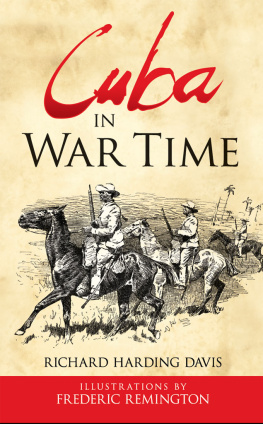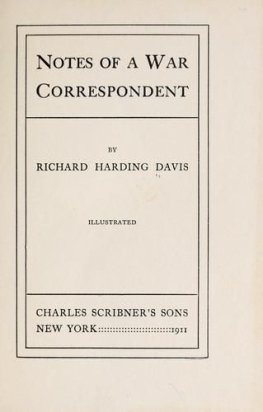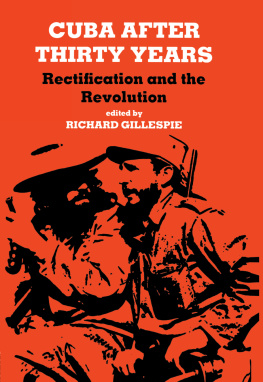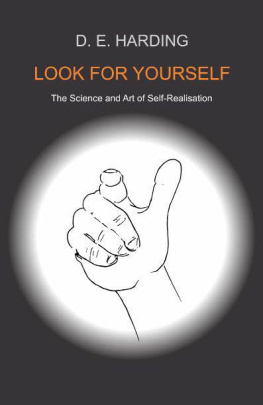Richard Harding Davis - Cuba in War Time
Here you can read online Richard Harding Davis - Cuba in War Time full text of the book (entire story) in english for free. Download pdf and epub, get meaning, cover and reviews about this ebook. year: 2016, publisher: Dover Publications, Inc, genre: Art. Description of the work, (preface) as well as reviews are available. Best literature library LitArk.com created for fans of good reading and offers a wide selection of genres:
Romance novel
Science fiction
Adventure
Detective
Science
History
Home and family
Prose
Art
Politics
Computer
Non-fiction
Religion
Business
Children
Humor
Choose a favorite category and find really read worthwhile books. Enjoy immersion in the world of imagination, feel the emotions of the characters or learn something new for yourself, make an fascinating discovery.
- Book:Cuba in War Time
- Author:
- Publisher:Dover Publications, Inc
- Genre:
- Year:2016
- Rating:3 / 5
- Favourites:Add to favourites
- Your mark:
- 60
- 1
- 2
- 3
- 4
- 5
Cuba in War Time: summary, description and annotation
We offer to read an annotation, description, summary or preface (depends on what the author of the book "Cuba in War Time" wrote himself). If you haven't found the necessary information about the book — write in the comments, we will try to find it.
Cuba in War Time — read online for free the complete book (whole text) full work
Below is the text of the book, divided by pages. System saving the place of the last page read, allows you to conveniently read the book "Cuba in War Time" online for free, without having to search again every time where you left off. Put a bookmark, and you can go to the page where you finished reading at any time.
Font size:
Interval:
Bookmark:
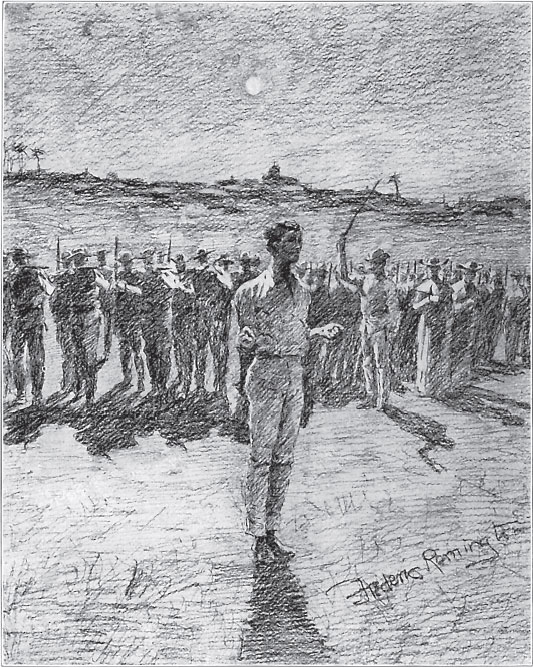
The Death of Rodriguez
Cuba
IN
W AR T IME
R ICHARD H ARDING D AVIS
I LLUSTRATIONS BY
F REDERIC R EMINGTON
D OVER P UBLICATIONS , I NC .
M INEOLA , N EW Y ORK
Bibliographical Note
This Dover edition, first published in 2016, is an unabridged republication of the work originally published by R.H. Russell, New York, in 1897.
Library of Congress Cataloging-in-Publication Data
Names: Davis, Richard Harding, 18641916, author. | Remington, Frederic, 18611909, illustrator.
Title: Cuba in war time / Richard Harding Davis; illustrations by Frederic Remington.
Description: Mineola, New York: Dover Publications, Inc., 2016. | An unabridged republication of the work originally published by R.H. Russell, New York, in 1897Title page verso.
Identifiers: LCCN 2016022464| ISBN 9780486811154 (paperback) | ISBN 0486811158 (paperback)
Subjects: LCSH: CubaHistoryRevolution, 18951898Personal narratives, American. | Davis, Richard Harding, 18641916TravelCuba. | BISAC: HISTORY / Caribbean & West Indies / Cuba. | HISTORY / Military / Strategy.
Classification: LCC F1786 .D27 2016 | DDC 972.91/05dc23 LC record available at https://lccn.loc.gov/2016022464
Manufactured in the United States by RR Donnelley
81115801 2016
www.doverpublications.com
Contents
Illustrations
NOTE
These illustrations were made by Mr. Frederic Remington, from personal observation while in Cuba, and from photographs, and descriptions furnished by eye-witnesses, and are here reproduced through the courtesy of Mr. W. R. Hearst.
Authors Note
A FTER my return from Cuba many people asked me questions concerning the situation there, and I noticed that they generally asked the same questions. This book has been published with the idea of answering those questions as fully as is possible for me to do after a journey through the island, during which I traveled in four of the six provinces, visiting towns, seaports, plantations and military camps, and stopping for several days in all of the chief cities of Cuba, with the exception of Santiago and Pinar del Rio.
Part of this book was published originally in the form of letters from Cuba to the New York Journal and in the newspapers of a syndicate arranged by the Journal; the remainder, which was suggested by the questions asked on my return, was written in this country, and appears here for the first time.
RICHARD HARDING DAVIS.
Cuba in War Time
W HEN the revolution broke out in Cuba two years ago, the Spaniards at once began to build tiny forts, and continued to add to these and improve those already built, until now the whole island, which is eight hundred miles long and averages eighty miles in width, is studded as thickly with these little forts as is the sole of a brogan with iron nails. It is necessary to keep the fact of the existence of these forts in mind in order to understand the situation in Cuba at the present time, as they illustrate the Spanish plan of campaign, and explain why the war has dragged on for so long, and why it may continue indefinitely.
The last revolution was organized by the aristocrats; the present one is a revolution of the puebleo, and, while the principal Cuban families are again among the leaders, with them now are the representatives of the plain people, and the cause is now a common cause in working for the success of which all classes of Cubans are desperately in earnest.
The outbreak of this revolution was hastened by an offer from Spain to make certain reforms in the internal government of the island. The old revolutionary leaders, fearing that the promise of these reforms might satisfy the Cubans, and that they would cease to hope for complete independence, started the revolt, and asked all loyal Cubans not to accept the so-called reforms when, by fighting, they might obtain their freedom. Another cause which precipitated the revolution was the financial depression which existed all over the island in 1894, and the closing of the sugar mills in consequence. Owing to the lack of money with which to pay the laborers, the grinding of the sugar cane ceased, and the men were turned off by the hundreds, and, for want of something better to do, joined the insurgents. Some planters believe that had Spain loaned them sufficient money with which to continue grinding, the men would have remained on the centrals, as the machine shops and residence of a sugar plantation are called, and that so few would have gone into the field against Spain that the insurrection could have been put down before it had gained headway. An advance to the sugar planters of five millions of dollars then, so they say, would have saved Spain the outlay of many hundreds of millions spent later in supporting an army in the field. That may or may not be true, and it is not important now, for Spain did not attack the insurgents in that way, but began hastily to build forts. These forts now stretch all over the island, some in straight lines, some in circles, and some zig-zagging from hill-top to hill-top, some within a quarter of a mile of the next, and others so near that the sentries can toss a cartridge from one to the other.
The island is divided into two great military camps, one situated within the forts, and the other scattered over the fields and mountains outside of them. The Spaniards have absolute control over everything within the fortified places; that is, in all cities, towns, seaports, and along the lines of the railroad; the insurgents are in possession of all the rest. They are not in fixed possession, but they have control much as a mad bull may be said to have control of a ten-acre lot when he goes on the rampage. Some farmer may hold a legal right to the ten-acre lot, through title deeds or in the shape of a mortgage, and the bull may occupy but one part of it at a time, but he has possession, which is better than the law.
It is difficult to imagine a line drawn so closely, not about one city or town, but around every city and town in Cuba, that no one can pass the line from either the outside or the inside. The Spaniards, however, have succeeded in effecting and maintaining a blockade of that kind. They have placed forts next to the rows of houses or huts on the outskirts of each town, within a hundred yards of one another, and outside of this circle is another circle, and beyond that, on every high piece of ground, are still more of these little square forts, which are not much larger than the signal stations along the lines of our railroads and not unlike them in appearance. No one can cross the line of the forts without a pass, nor enter from the country beyond them without an order showing from what place he comes, at what time he left that place, and that he had permission from the commandante to leave it. A stranger in any city in Cuba to-day is virtually in a prison, and is as isolated from the rest of the world as though he were on a desert island or a floating ship of war. When he wishes to depart he is free to do so, but he cannot leave on foot nor on horseback. He must make his departure on a railroad train, of which seldom more than two leave any town in twenty-four hours, one going east and the other west. From Havana a number of trains depart daily in different directions, but once outside of Havana, there is only one train back to it again. When on the cars you are still in the presence and under the care of Spanish soldiers, and the progress of the train is closely guarded. A pilot engine precedes it at a distance of one hundred yards to test the rails and pick up dynamite bombs, and in front of it is a car covered with armor plate, with slits in the sides like those in a letter box, through which the soldiers may fire. There are generally from twenty to fifty soldiers in each armored car. Back of the armored car is a flat car loaded with ties, girders and rails, which are used to repair bridges or those portions of the track that may have been blown up by the insurgents. Wherever a track crosses a bridge there are two forts, one at each end of the bridge, and also at almost every cross-road. When the train passes one of these forts, two soldiers appear in the door and stand at salute to show, probably, that they are awake, and at every station there are two or more forts, while the stations themselves are usually protected by ramparts of ties and steel rails. There is no situation where it is so distinctly evident that those who are not with you are against you, for you are either inside of one circle of forts or passing under guard by rail to another circle, or you are with the insurgents. There is no alternative. If you walk fifty yards away from the circle you are, in the eyes of the Spaniards, as much in the field as though you were two hundred miles away on the mountains.
Next pageFont size:
Interval:
Bookmark:
Similar books «Cuba in War Time»
Look at similar books to Cuba in War Time. We have selected literature similar in name and meaning in the hope of providing readers with more options to find new, interesting, not yet read works.
Discussion, reviews of the book Cuba in War Time and just readers' own opinions. Leave your comments, write what you think about the work, its meaning or the main characters. Specify what exactly you liked and what you didn't like, and why you think so.

